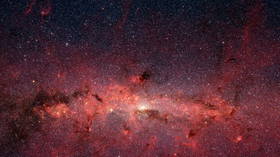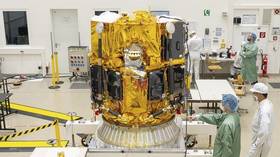Star devours planet in glimpse into Earth’s eventual fate

Astronomers in the United States revealed on Wednesday that they had witnessed for the first time one of the most destructive forces in the cosmos: a dying star which had expanded massively into a red giant and destroyed a planet which had the misfortune of being nearby.
Scientists believe that most planets are eventually destroyed when their host star burns all of its available energy and begins its process of dying by expanding into a red giant. It is the final stage of a star’s stellar evolution – and the star goes down fighting, bringing everything nearby with it into its celestial grave.
But this particular one, said MIT’s Kishalay De, according to broadcaster France 24, developed like a “detective story.”
“It all started about three years ago when I was looking at data from the Zwicky Transient Facility survey, which takes images of the sky every night,” De said. It was in this seemingly random kaleidoscope of images, he added, that he noticed a star which had increased its brightness 100 times over the course of just ten days.
Closer inspection, including with NASA’s infrared space telescope NEOWISE, revealed that the dying star – located in the Milky Way galaxy around 12,000 light years from Earth – had swallowed a gas giant of similar size to Jupiter that had been orbiting around it. The entire process, they surmised, took around 100 days.
The final, bright explosion De witnessed in the night sky images he studied took place in the final ten days of the planet’s life as it became entirely subsumed into the red giant.
And given that the now-destroyed planet was around 11 times bigger than Earth, scientists don’t expect our home planet to put up much of a fight when it gets destroyed by the Sun in about five billion years’ time.
“After the billions of years that span the lifetime of our solar system, our own end stages will likely conclude in a final flash that lasts only a few months,” said Ryan Lau, a research partner of De’s, who added that their findings “speak to the transience of our existence.”
People, though, likely won’t be around to witness our eventual fate, given that the Sun’s expansion into its own red giant form will have long rendered our planet into a dry, inhospitable wasteland.













